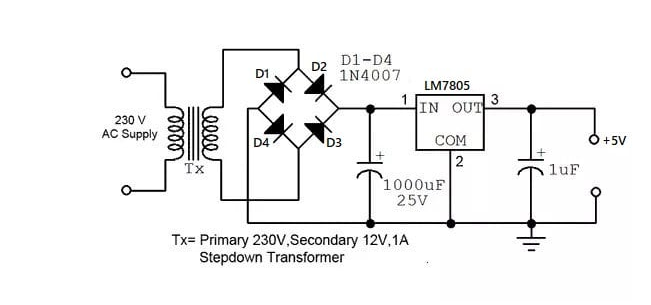An AC-DC converter is an electronic circuit that basically takes alternating current (AC) and converts it into direct current (DC). These converters are pretty much everywhere in electronic devices that need DC power, like computers, TVs and smartphones. We use AC-DC converters because AC is the standard power supply from utility companies, but a lot of electronic devices need DC power. AC-DC converters change AC to DC, so electronic devices can work properly.
In the complex network of modern electronic devices, AC/DC converters serve as the ‘heart’ of power conversion, performing the critical task of converting alternating current (AC) to direct current (DC). The efficiency of AC/DC converters is a key indicator of device performance, laying the foundation for the stable operation of various electronic devices. From daily-use mobile phone chargers and computer power supplies to large-scale industrial equipment, AC/DC converters are ubiquitous, and their importance is obvious. Next, this article will take an in-depth look at the working principles of AC/DC converters, comprehensively unlocking the mystery of this core device.

As we all know, most of the electronic devices we use in our households need a steady flow of electricity, but household outlets provide alternating current (AC) power. That's where an AC to DC power converter comes in handy. Here are some typical cases: All those gadgets we're always using – smartphones, laptops and tablets – need to be plugged in to charge. Most electronics need low-voltage DC (like 5V or 12V), but wall outlets provide high-voltage AC (100V-240V). So, device chargers have built-in rectifiers and transformers to lower and convert this AC to DC, making it safe to charge directly from standard outlets.
Rectification is the initial step in conversion, with its core function being to convert alternating current (AC) signals with alternating positive and negative polarities into unidirectional pulse voltage signals. Half-wave rectification and full-wave rectification are common rectification methods, with full-wave rectification further subdivided into bridge rectification and centre-tapped rectification. Half-wave rectification utilises only half of the AC cycle, using the unidirectional conductivity of diodes to eliminate the negative half-cycle and retain only the positive half-cycle, thereby forming a unidirectional pulsed voltage. However, this method has low voltage utilisation efficiency and noticeable ripple. Full-wave rectification effectively overcomes the drawbacks of half-wave rectification. Taking a diode bridge rectifier circuit as an example, four diodes form a bridge structure. Regardless of whether the AC current is in the positive or negative half-cycle, two diodes are always conducting, thereby converting the AC current into a unidirectional pulse voltage. This significantly improves the output voltage utilisation rate, with the average output voltage reaching twice that of half-wave rectification, and the ripple being relatively small. Although the rectified output voltage achieves unidirectional flow, there are still noticeable voltage fluctuations, resulting in a periodic pulsating waveform. To smooth out this pulsation, a filtering stage is required. The filter circuit primarily utilises the energy storage characteristics of capacitors and inductors to filter out the AC components from the pulsating DC voltage.

After rectification and filtering, the DC voltage is relatively smooth, but it is still affected by factors such as input voltage fluctuations and load changes, making it difficult to meet the voltage stability requirements of precision electronic equipment. Therefore, a voltage regulation stage is needed to ensure that the output voltage remains constant under various operating conditions. Linear voltage regulation circuits and switching voltage regulation circuits are the two main types of voltage regulation methods. Linear voltage regulation circuits adjust the conduction level of power transistors to dissipate the voltage difference between the input and output as thermal energy, thereby achieving voltage regulation. While this method has a simple structure and low output ripple, it has low efficiency and is suitable for low-power applications with extremely high voltage stability requirements.
In simple terms, the easiest and most effective way to change alternating current (AC) to direct current (DC) is with a device called a rectifier. Rectifiers are normally made of diodes, which let current flow in only one direction, turning AC into unidirectional DC. A half-wave rectifier blocks the negative half of the AC waveform, producing basic pulsating DC. To get a smoother output, a full-wave rectifier can invert the negative half-wave of AC into a positive half-wave, which produces more continuous DC. Adding a capacitor after the rectifier reduces ripple, producing a more stable DC output suitable for powering electronic devices.
So, to sum up, converting AC to DC is really important for powering the electronic devices we use every day. Most electronics use DC, but they're powered through household outlets using AC. Chargers and adapters handle this conversion safely and seamlessly, so you don't have to worry about anything. We've been looking at how all the different parts of the process, like rectifiers, transformers and capacitors, work together to create a steady DC output. This is really important for making sure our devices work properly and for making them last.








